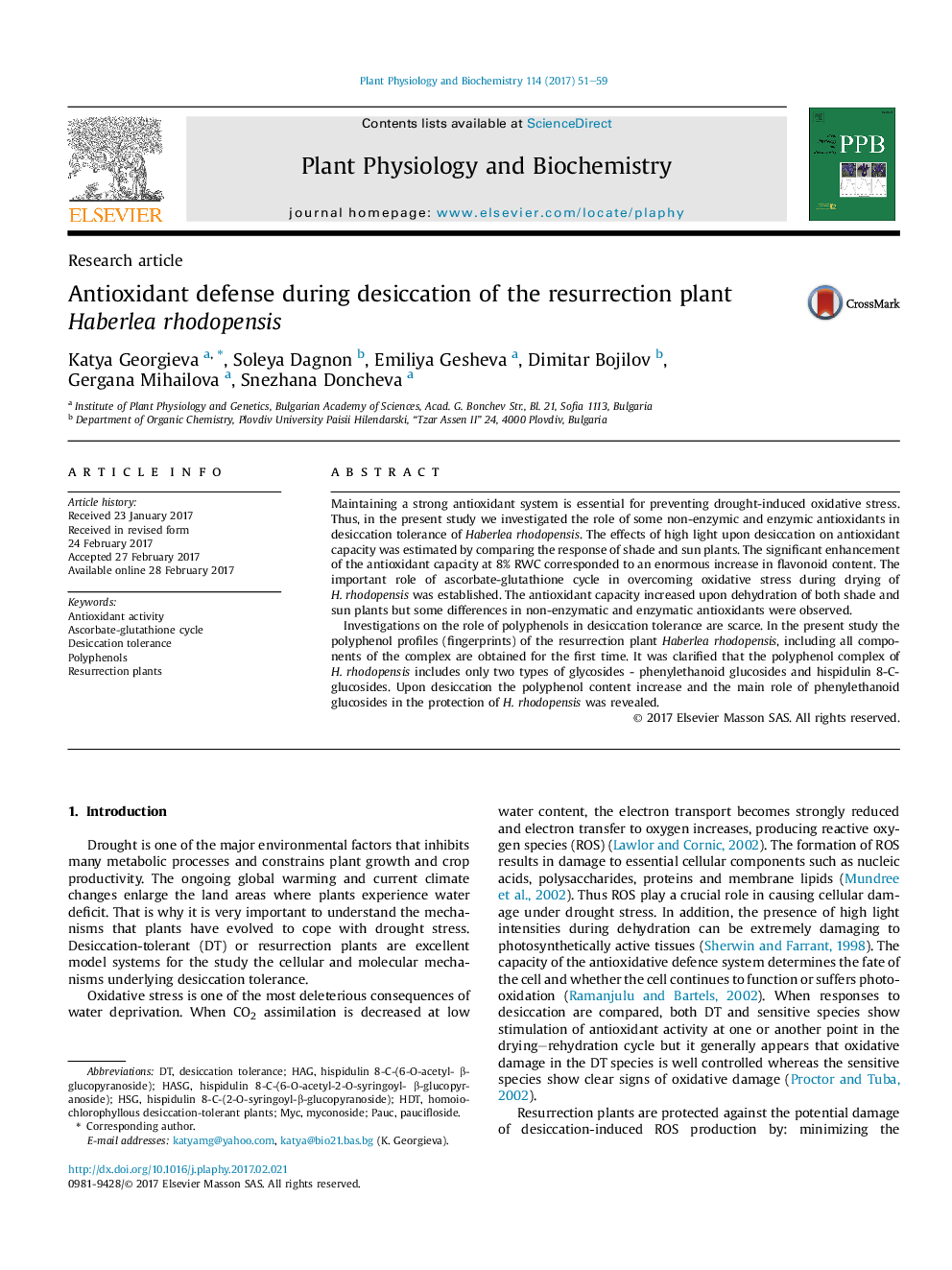| Article ID | Journal | Published Year | Pages | File Type |
|---|---|---|---|---|
| 5515578 | Plant Physiology and Biochemistry | 2017 | 9 Pages |
â¢Enhanced antioxidant activity in dry leaves correlated with high amount of flavonoids.â¢GSH and Asc play an important roles in preventing photo-oxidation at very low RWC.â¢The role of non-enzymatic and enzymatic antioxidants differ in dried shade and sun plants.â¢The polyphenol complex of H. rhodopensis includes only two types of glycosides.â¢The phenylethanoid glucosides play a main role in the protection of H. rhodopensis during desiccation.
Maintaining a strong antioxidant system is essential for preventing drought-induced oxidative stress. Thus, in the present study we investigated the role of some non-enzymic and enzymic antioxidants in desiccation tolerance of Haberlea rhodopensis. The effects of high light upon desiccation on antioxidant capacity was estimated by comparing the response of shade and sun plants. The significant enhancement of the antioxidant capacity at 8% RWC corresponded to an enormous increase in flavonoid content. The important role of ascorbate-glutathione cycle in overcoming oxidative stress during drying of H. rhodopensis was established. The antioxidant capacity increased upon dehydration of both shade and sun plants but some differences in non-enzymatic and enzymatic antioxidants were observed.Investigations on the role of polyphenols in desiccation tolerance are scarce. In the present study the polyphenol profiles (fingerprints) of the resurrection plant Haberlea rhodopensis, including all components of the complex are obtained for the first time. It was clarified that the polyphenol complex of H. rhodopensis includes only two types of glycosides - phenylethanoid glucosides and hispidulin 8-C-glucosides. Upon desiccation the polyphenol content increase and the main role of phenylethanoid glucosides in the protection of H. rhodopensis was revealed.
